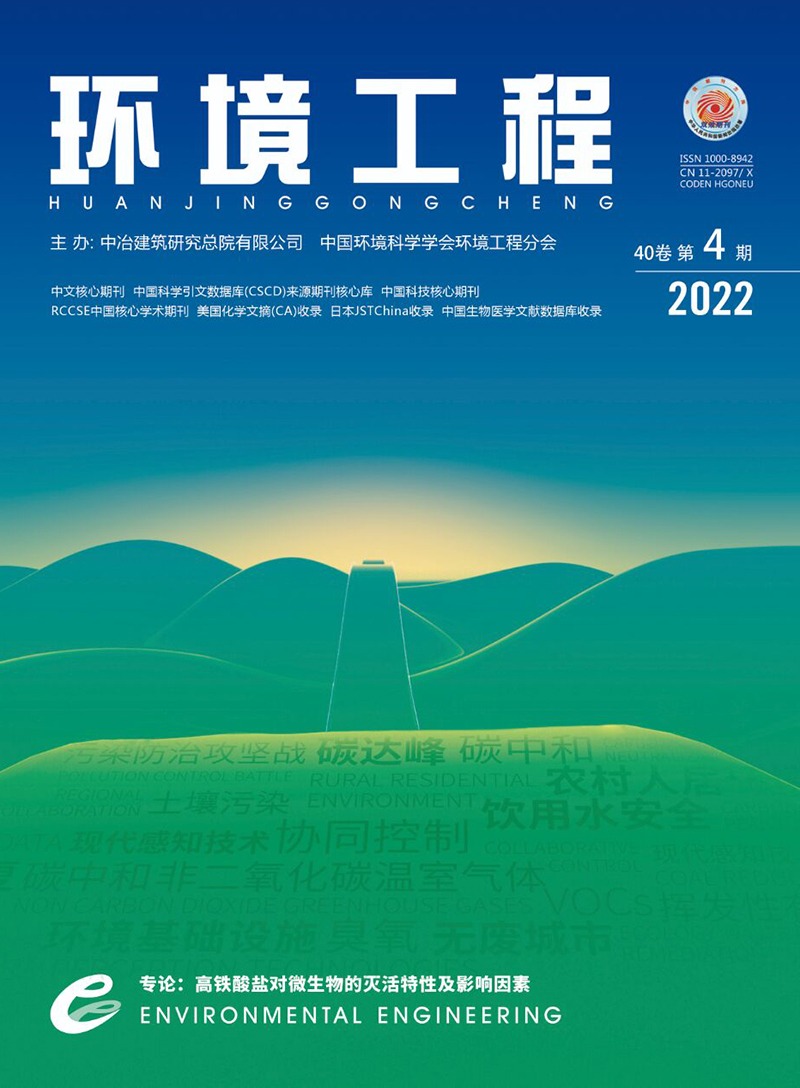| [1] |
袁峰,唐先进,吴骥子,等.两种铁基材料对污染农田土壤砷、铅、镉的钝化修复[J].环境科学,2021,42(7):3535-3548.
|
| [2] |
佚名.全国土壤污染状况调查公报[J].中国环保产业,2014(5):10-11.
|
| [3] |
张金碧,柯耀义.微波消解-石墨炉原子吸收光谱法测定土壤中铅、镉的探究[J].广东化工,2021,48(5):191-192
,190.
|
| [4] |
冯艳红,郑丽萍,应蓉蓉,等.黔西北炼锌矿区土壤重金属形态分析及风险评价[J].生态与农村环境学报,2017,33(2):142-149.
|
| [5] |
ZHU R,WU M,YANG J. Mobilities and leachabilities of heavy metals in sludge with humus soil[J]. Journal of Environmental Sciences, 2011, 23(2):247-254.
|
| [6] |
ZHANG L W,SHANG Z B,GUO K X,et al. Speciation analysis and speciation transformation of heavy metal ions in passivation process with thiol-functionalized nano-silica[J]. Chemical Engineering Journal, 2019, 369:979-987.
|
| [7] |
LIU Q J,LI X,TANG J P,et al. Characterization of goethite-fulvic acid composites and their impact on the immobility of pb/cd in soil[J]. Chemosphere, 2019, 222:556-563.
|
| [8] |
LIU J F, ZHAO Z S, JIANG G B. Coating Fe3O4 magnetic nanoparticles with humic acid for high efficient removal of heavy metals in water[J]. Environmental Science&Technology, 2008, 42(18):6949-6954.
|
| [9] |
DU Q,LI G X, ZHANG S S,et al. High-dispersion zero-valent iron particles stabilized by artificial humic acid for lead ion removal[J]. J Hazard Mater, 2020, 383:121170.
|
| [10] |
FU R B,ZHANG X,XU Z,et al. Fast and highly efficient removal of chromium (Ⅵ) using humus-supported nanoscale zero-valent iron:influencing factors, kinetics and mechanism[J]. Separation and Purification Technology, 2017, 174:362-371.
|
| [11] |
TANG W W, ZENG G M, GONG J L,et al. Impact of humic/fulvic acid on the removal of heavy metals from aqueous solutions using nanomaterials:a review[J]. Science of the Total Environment, 2014,468/469:1014-1027.
|
| [12] |
陈林倩.富硒区芥菜土壤腐殖质特征及其对重金属迁移转化的影响[D].海口:海南大学,2018.
|
| [13] |
JIANG D N, ZENG G M, HUANG D L,et al. Remediation of contaminated soils by enhanced nanoscale zero valent iron[J]. Environmental Research, 2018, 163:217-227.
|
| [14] |
LLERME N V, JOSÉ E C, JUNIOR S G P. Influence of soil use on organic carbon and humic substances of an oxisol in tropical systems[J]. Functions of Natural Organic Matter in Changing Environment, 2013, 401-405.
|
| [15] |
LINDSAY W L,NORVELL W A. Development of a dtpa soil test for zinc, iron, manganese, and copper[J]. Soil Science Society of America Journal, 1978, 42(3):421-428.
|
| [16] |
LYDIA L,JEAN-LUC P. A new sequential extraction procedure for the speciation of particulate trace elements in river sediments[J]. International Journal of Environmental Analytical Chemistry, 1999, 73(2):109-128.
|
| [17] |
王培.纤维素改性纳米零价铁及其对水中染料的脱色降解研究[D].昆明:昆明理工大学,2015.
|
| [18] |
ARANGANATHAN L,RAJASREE R R S,GOVINDARAJU K,et al. Spectral and microscopic analysis of fulvic acids isolated from marine fish waste and sugarcane bagasse co-compost[J]. Biocatalysis and Agricultural Biotechnology, 2020, 29:101762.
|
| [19] |
MOHAMMAD B. Ahmed,JOHN L. zhou,HUU H. Ngo,et al. Nano-Fe0 immobilized onto functionalized biochar gaining excellent stability during sorption and reduction of chloramphenicol via transforming to reusable magnetic composite[J]. Chemical Engineering Journal, 2017, 322(1):571-581.
|
| [20] |
赵庆圆,李小明,杨麒,等.磷酸盐、腐殖酸与粉煤灰联合钝化处理模拟铅镉污染土壤[J].环境科学,2018,39(1):389-398.
|
| [21] |
BAI H C, LUO M, WEI S Q,et al. The vital function of humic acid with different molecular weight in controlling cd and pb bioavailability and toxicity to earthworm (Eisenia fetida) in soil[J]. Environmental Pollution, 2020, 261.
|
| [22] |
MALANDRINO M,ABOLLINO O,BUOSO S,et al. Accumulation of heavy metals from contaminated soil to plants and evaluation of soil remediation by vermiculite[J]. Chemosphere, 2011, 82(2):169-178.
|
| [23] |
赵中秋,朱永官,蔡运龙.镉在土壤-植物系统中的迁移转化及其影响因素[J].生态环境,2005,14(2):282-286.
|
| [24] |
崔妍,丁永生,公维民,等.土壤中重金属化学形态与植物吸收的关系[J].大连海事大学学报,2005,31(2):59-63.
|
| [25] |
乔庆霞,黄小凤.沘江表层底泥中重金属化学形态的研究[J].昆明理工大学学报,1999(2):3-5.
|
| [26] |
DOU X M,LI R,ZHAO B,et al. Arsenate removal from water by zero-valent iron/activated carbon galvanic couples[J]. Journal of Hazardous Materials, 2010, 182(1):108-114.
|
| [27] |
KlÜPFEL L,KEILUWEIT M,KLEBER M,et al. Redox properties of plant biomass-derived black carbon (biochar)[J]. Environmental Science&Technology, 2014, 48(10):5601-5611.
|
| [28] |
鲁秀国,武今巾,郑宇佳.核桃壳生物炭对土壤中镉的钝化修复[J].环境工程,2020,38(11):196-202.
|
| [29] |
王向琴,刘传平,杜衍红,等.零价铁与腐殖质复合调理剂对稻田镉砷污染钝化的效果研究[J].生态环境学报,2018,27(12):2329-2336.
|
| [30] |
高晓宁.土壤重金属污染现状及修复技术研究进展[J].现代农业科技,2013(9):229-231.
|


 Login
Login Register
Register E-alert
E-alert






 DownLoad:
DownLoad: